Clancy Tucker's Blog, page 199
January 21, 2017
22 January 2017 - ON THIS DAY
ON THIS DAY
G'day folks,
Yep, these are a few things that happened on this day in history.
2006 Eco Morales becomes Bolivia's first indigenous presidentThe left-wing politician has focused mainly on combating poverty and curbing the influence of transnational corporations.
1970 The Boeing 747 takes off on its first scheduled flightThe Pan Am jumbo jet flew from New York to London.
1963 The Élysée Treaty formalizes the reconciliation between Germany and FranceThe treaty effectively ended centuries of enmity between the two European countries.
1943 World record for fastest temperature changeThe fastest temperature change recorded in history occurred on this day in Spearfish, South Dakota. The temperature increased from −4°F (−20°C) to +45°F (+7°C)m in the span of two minutes.
1506 The first 150 soldiers of the Swiss Guard arrive at the VaticanSince that day, the Swiss Guard is responsible for the Pope's security.
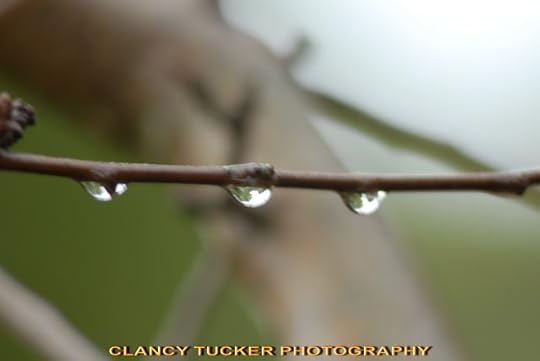 Births On This Day – 22 January1953 Jim JarmuschAmerican director1909 U ThantBurmese diplomat, 3rd United Nations Secretary General1906 Robert E. HowardAmerican author1788 Lord ByronEnglish poet1729 Gotthold Ephraim LessingGerman author, philosopher
Births On This Day – 22 January1953 Jim JarmuschAmerican director1909 U ThantBurmese diplomat, 3rd United Nations Secretary General1906 Robert E. HowardAmerican author1788 Lord ByronEnglish poet1729 Gotthold Ephraim LessingGerman author, philosopher Deaths On This Day – 22 January2010 Iskandar of Johor2008 Heath LedgerAustralian actor, director1973 Lyndon B. JohnsonAmerican politician, 36th President of the United States1901 Queen Victoriaof the United Kingdom1900 David Edward HughesWelsh/American scientist, co-invented the microphone
Deaths On This Day – 22 January2010 Iskandar of Johor2008 Heath LedgerAustralian actor, director1973 Lyndon B. JohnsonAmerican politician, 36th President of the United States1901 Queen Victoriaof the United Kingdom1900 David Edward HughesWelsh/American scientist, co-invented the microphone
Clancy's comment: Wow, I never knew that about the Swiss Guards. 1506!
I'm ...


Published on January 21, 2017 13:32
January 20, 2017
21 January 2017 - BIG BEN - SOME FACTS

BIG BEN- Some Facts -
G'day folks,
Here are some facts you have always wanted to know about this famous clock.
How old is Big Ben?
He was cast on 10th April 1858, so he's 151 years old.
Is Big Ben one of Britain’s famous landmarks?
Yesirree! Without a doubt, Big Ben is a very famous – and beloved – British landmark; he was voted #1 in a 2008 survey.
Where is Big Ben located?
Big Ben is the giant bell in the belfry of the Clock Tower at the Palace of Westminster
What is the name of the Bell?
Big Ben!
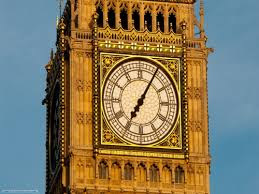
Who named Big Ben?
Londoners did. SUPPOSEDLY, the bell was going to be named Victoria after Queen Victoria, but Londoners started calling the bell "Big Ben" and the name stuck.
Where was Big Ben made? When was Big Ben made?
Big Ben was cast at Whitechapel Bell Foundry, in East London, on 10th April 1858. It took him two weeks to cool, and once he was ready, they transported him to Westminster on a horse drawn carriage. Londoners lined the route and cheered as the bell went past.
How much does Big Ben weigh?
He weighs about 13 and a half tons, about the same as a small elephant.
How tall is Big Ben? How wide is Big Ben?
Big Ben is 2.28 metres tall (7 feet six inches) and 2.75 metres wide (9 feet). That's right -- he's wider than he is tall!
How loud is Big Ben?
If you're standing in the belfry when it rings, you can feel the vibration all the way from your head to your toes.
Can you hear Big Ben inside the Houses of Parliament?
Yes, if you listen. But it's not as loud as you'd think. It's actually easier to hear it OUTSIDE!
What materials is Big Ben made out of?
Tin and copper, plus pieces of the old Big Ben, which was broken up after it cracked.
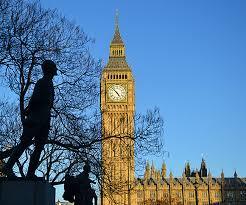
What colour is Big Ben?
Kind of grey, with some green marks and a bit of old pigeon poo.
Does the clapper inside ever need to be replaced?
Big Ben doesn't have a clapper. He hangs very still from the belfry, and he is struck by a hammer from the outside.
Who owns Big Ben?
You do!
If you are a citizen of the UK, and if you pay taxes, you are one of the owners of Big Ben. In fact, you own the whole clock tower and the Houses of Parliament too!
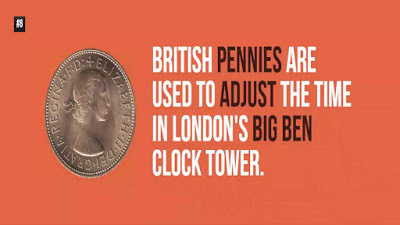

Clancy's comment: There ya go. Interesting, eh?
I'm ...


Published on January 20, 2017 13:49
January 19, 2017
20 January 2017 - MOVING PICTURES

MOVING PICTURES
G'day folks,
Welcome to some startling pictures that move.






[image error]
[image error]
[image error]
[image error]

[image error]


[image error]




Clancy's comment: There are some very clever ones here. Loved the chocolate cup.
I'm ....


Published on January 19, 2017 12:22
January 18, 2017
19 January 2017 - HELEN CHEBATTE - Guest Author

HELEN CHEBATTE- Guest Author -
G'day folks,
Here is my interview with an award-winning author and professional actress.
Welcome, Helen ...
1. TELL US A LITTLE ABOUT YOURSELF AND YOUR WRITING JOURNEY.
While BRO is my first novel, life hasn’t always been about writing.I am a professional actress and work in film, television and theatre. Some of my credits include guest roles on Crownies, Deadly Women, and the feature films, Cedar Boys and Alex and Eve. I also spent time teaching Speech and Drama.
I began writing about ten or twelve years ago after my dad passed away. I wrote as a way of expressing my grief. It wasn’t until I stopped that I realised how much I liked the written word. I started again but this time I wrote stories. I couldn’t get enough of the literary world so I took writing courses, joined writing organisations and even co-founded a writers group.
I was thrilled when my novel, BRO won the Children’s Book Council of Australia’s Aspiring Writer’s Mentorship and the Inaugural Charlotte Waring Barton Award for unpublished work. A few years later it was published by Hardie Grant Egmont.
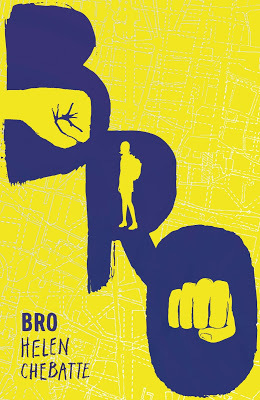
2. WHAT DO YOU ENJOY MOST ABOUT BEING A WRITER?
Creating stories is one of the great enjoyments but also meeting so many terrific people.
4. WHAT WERE YOU IN A PAST LIFE, BEFORE YOU BECAME A WRITER?
I started my working career as a Hairdresser. That was fun for a few years but the desire to act was too strong so I left hairdressing and became an actress. I also taught drama. Writing was a surprise. It came much later in my life and in an unexpected way.
5. WHAT IS YOUR GREATEST WRITING ACHIEVEMENT?
Before my book was published, it won the Children’s’ Book Council of Australia’s Aspiring Writers’ Mentorship. It was such a thrill to know someone else liked it.
6. WHAT ARE YOU WORKING ON AT THE MOMENT?
I’m working on my second YA novel. It has similar themes to my first one and is, after some serious writer’s block, moving smoothly now.
7. WHAT INSPIRES YOU?
Acts of kindness.
8. WHAT GENRE DO YOU WRITE?
Young Adult novels and picture book texts – so far.
9. DO YOU SUFFER FROM WRITER’S BLOCK?
Yes, and I don’t like it.
10. WHAT’S THE GREATEST COMPLIMENT YOU EVER RECEIVED FROM A READER?
A parent told me their son hated reading until he read BRO. Reluctant readers were one of the target readers I had in mind when writing BRO so it was most pleasing to hear it had reached that goal.
11. WRITERS ARE SOMETIMES INFLUENCED BY THINGS THAT HAPPEN IN THEIR OWN LIVES. ARE YOU?
Yes, definitely. I see a lot of myself and my surroundings hidden in my stories.
12. OTHER THAN WRITING, WHAT ELSE DO YOU LOVE?
Acting! It’s all about creative expression. Travelling, I’ve just started to visit other countries and places, and I love it! Movies, I watch three a week at least. I also love being at home. And of course, reading, there’s always a book somewhere nearby that I can pick up and disappear for a while.
13. DID YOU HAVE YOUR BOOK / BOOKS PROFESSIONALLY EDITED BEFORE PUBLICATION?
As a matter of fact, I did. Twice! The first time was during my mentorship. My mentor was the children’s book editor at Penguin. She gave it a good work over. Months later, when my mentorship was over and more changes were made to the story; I sought the services of another professional editor. I wanted it to be as perfect as I could get it before it was submitted to publishers.
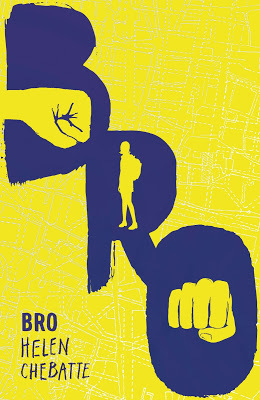
14. DESCRIBE YOUR PERFECT DAY.
My perfect day changes depending on my mood, my work load or even the weather. Right now, a perfect day would be a lazy day, reading a chapter or three between movies while the rain falls on my garden outside. Eating homemade cake would complete that scene.
15. IF YOU WERE STUCK ON A DESERT ISLAND WITH ONE PERSON, WHO WOULD IT BE? WHY?
I’d have to say my husband, Charlie because he’d find a way off the island.
16. WHAT WOULD YOU SAY IF YOU HAD THE CHANCE TO SPEAK TO WORLD LEADERS?
I would echo John Lennon’s famous lyrics, ‘give peace a chance’ and if they ask how to do that, I’d echo another of John Lennon’s lyrics ‘all you need is love’
17. WHAT ARE YOUR PLANS FOR THE FUTURE?
Too many! But it is better, I think, to plan for the present.
18. DO YOU SEE YOURSELF IN ANY OF YOUR CHARACTERS?
I think there’s a bit of me in all my characters despite them being mainly males. I think writers always leave a part of themselves in their stories.
19. DID YOU EVER THINK OF QUITTING?
Years ago I would have said no, never but as I’ve gotten older I find things can get overwhelming. I recently read something that said; instead of thinking about quitting, learn to rest and I think that’s probably where it’s at with me.
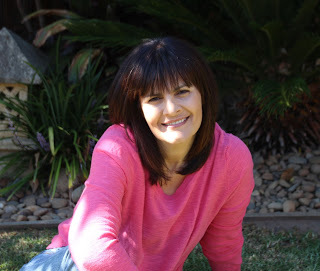
20. WOULD YOU LIKE TO HAVE YOUR BOOKS MADE INTO MOVIES? EVER WRITTEN A SCREENPLAY?
I would love to see BRO as TV series. It’s set in a high school yard and has interesting characters. Many things can happen based on what these characters believe, think and say. And the rules of their school yard create many ongoing conflicts.
I do dabble in a bit of screenwriting.
21. WRITING IS ONE THING. WHAT ABOUT MARKETING YOU, YOUR BOOKS AND YOUR BRAND? ANY THOUGHTS?
Writing BRO was an enjoyable experience. It was fun and inspiring. Marketing however is hard work although necessary. It’s new to me and I’m taking it as it comes, learning as I go along. It’s great seeing established writers do their thing when it comes to marketing their books. There’s a lot to gain from watching them.
22. WHAT PISSES YOU OFF MOST?
Cruelty, especially to animals.
23. WHAT IS THE TITLE OF THE LAST BOOK YOU READ? GOOD ONE?
A YA book called Lady Helen and the Dark Days Club by Alison Goodman. It was fantastic! I’m looking forward to the next one in the series.
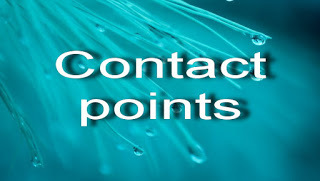
WEBSITE

Clancy's comment: Thank you, Helen. I like the title. Good luck, and keep writing.
I'm ...

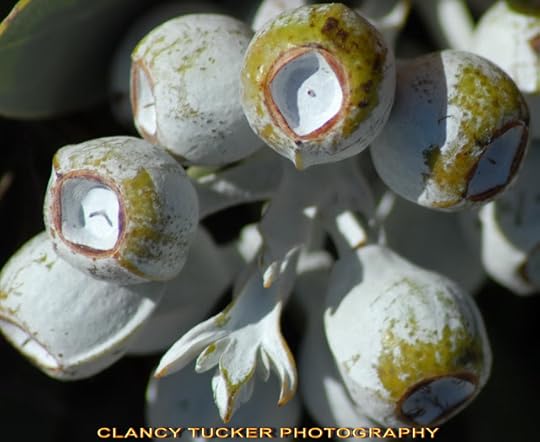
Published on January 18, 2017 12:24
January 17, 2017
18 January 2017 - VINCENT LINGIARI - ACTIVIST
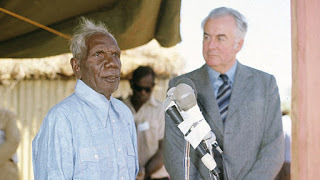
VINCENT LINGIARI- ACTIVIST -
G'day folks,
Welcome to some facts about a man I mentioned in my third book, 'A Drover's Blanket'. Vincent Lingiari AM, was an Aboriginal rights activist, and a member of the Gurindji people. In his earlier life he worked as a stockman at Wave Hill Cattle Station.
Vincent Lingiari, a Kadijeri man, was thrust into public life when he led the Gurindji people off Wave Hill station in 1966. The powerful Vestey Company had refused to pay these pastoral workers wages of $25.00 per week. The walk-off to Daguragu (or Wattie Creek) was an initial response to the refusal to pay, but the protest shifted to a more fundamental request - that traditional Gurindji lands be returned.
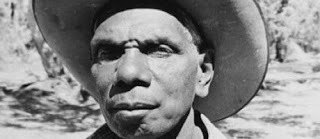
The strike lasted seven years. In 1975, in a now famously symbolic gesture, Prime Minister Gough Whitlam poured earth into Lingiari's hand to mark the giving of a lease of 3300 square kilometres to the Muramulla Gurindji Company.
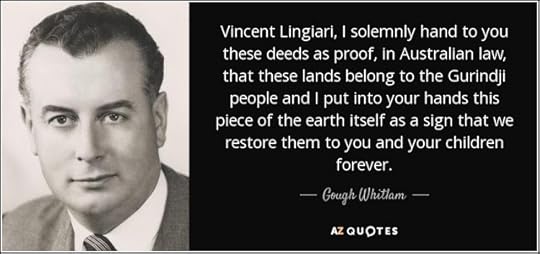
Vincent Lingiari was one of four Gurindji signatories to the petition to the Governor-General in 1967. The petition argued that 'morally the land is ours and should be returned to us'.

Lingiari continued to play a leadership role as the Gurindji people established this company on lands finally recognised as belonging to them. As a result of his leadership of the campaign for Gurindji land, Vincent Lingiari has become a national iconic figure representing, more broadly, the struggle of Aboriginal people to have their rights to land recognised.


Clancy's comment: Well done, Vincent. This man could not read or write, but he stuck to his principles. I think his quote mentioned above, is profound.
I'm ...

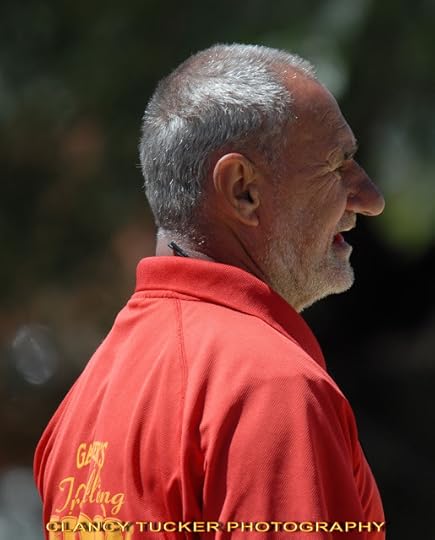
Published on January 17, 2017 12:00
January 16, 2017
17 January 2017 - WEIRD STUFF
[image error]
WEIRD STUFF
G'day folks,
Hey, some of these will surely make you smile.







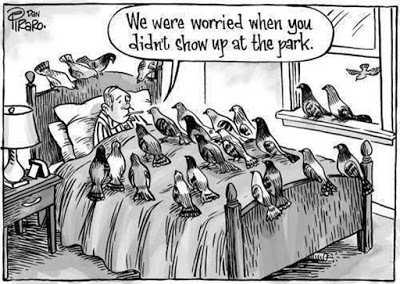







Clancy's comment: Well, did you smile? I did.
I'm ...

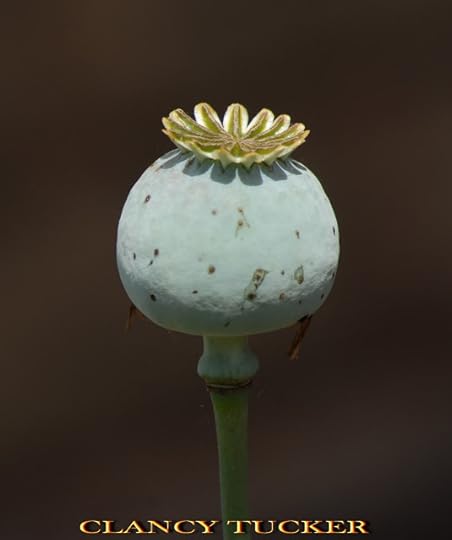
WEIRD STUFF
G'day folks,
Hey, some of these will surely make you smile.















Clancy's comment: Well, did you smile? I did.
I'm ...


Published on January 16, 2017 12:28
January 15, 2017
16 January 2017 - JOHN COLTRANE
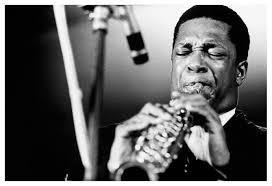
JOHN COLTRANE
G'day folks,
Welcome to some background on another talented muso who died way too young. John Coltrane was an acclaimed American saxophonist, bandleader and composer, becoming an iconic figure of 20th-century jazz with albums like 'Giant Steps,' 'My Favorite Things' and 'A Love Supreme.'
“You can play a shoestring if you're sincere.”
—John Coltrane
John Coltrane was born on September 23, 1926, in Hamlet, North Carolina. During the 1940s and '50s, he continued to develop his craft as a saxophonist and composer, working with famed musicians/bandleaders Dizzy Gillespie, Duke Ellington and Miles Davis. Coltrane turned the jazz world on its head with technically marvelous, innovative playing that was thrillingly dense and fluid in its understanding of the genre; his virtuosity and vision could be heard on the now revered albums Giant Steps, My Favorite Things and A Love Supreme, among others. He died from liver cancer at 40 years old on July 17, 1967, in Huntington, Long Island, New York.
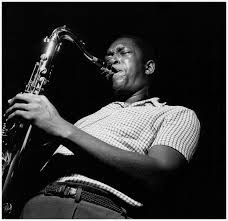
Background and Early YearsA revolutionary and groundbreaking jazz saxophonist, John William Coltrane was born on September 23, 1926, in Hamlet, North Carolina, growing up in nearby High Point. Coltrane was surrounded by music as a child. His father John R. Coltrane worked as a tailor, but had a passion for music, playing several instruments. The younger Coltrane's early influences included jazz legends like Count Basie and Lester Young. By his teens, Coltrane had picked up the alto saxophone and displayed immediate talent.
Family life took a tragic turn in 1939 with the passing of Coltrane's father, along with several other relatives. Financial struggles defined this period for Coltrane, and eventually his mother Alice and other family members moved to New Jersey in the hopes of having an improved life. Coltrane remained in North Carolina until he graduated from high school.
In 1943, he too moved north, specifically to Philadelphia, to make a go of it as a musician. For a short time Coltrane studied at the Ornstein School of Music. But with the country in the throes of war, he was called to duty and enlisted in the Navy. During his service, Coltrane was stationed in Hawaii and regularly performed and made his first recording with a quartet of fellow sailors.
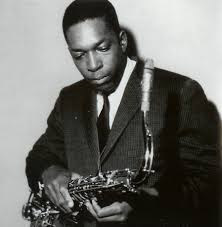
Joining Gillespie and EllingtonUpon his return to civilian life in the summer of 1946, Coltrane landed back in Philadelphia, where he studied at the Granoff School of Music and proceeded to hook up with a number of jazz bands. One of the earliest was a group led by Eddie "Cleanhead" Vinson, for whom Coltrane switched over to tenor sax. He later joined Jimmy Heath's band, where Coltrane began to fully explore his experimental side. Then in the fall of 1949 he signed on with a big band led by famed trumpeter Dizzy Gillespie, remaining with the group for the next year and a half.
Coltrane had started to earn a name for himself. But during the 1950s, as was the case with other jazz performers, he began to use drugs, mainly heroin. His talent earned him gigs, but his addictions ended them prematurely. In 1954, Duke Ellington brought Coltrane on to temporarily replace Johnny Hodges, but soon fired him because of his drug dependency.
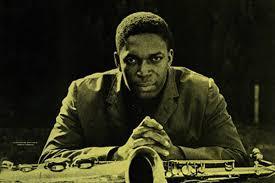
Famed Work With Miles DavisColtrane rebounded during the mid-'50s when Miles Davis asked him to join his group, the Miles Davis Quintet. Davis encouraged Coltrane to push his creative boundaries while holding him accountable for his drug habits. With the group working under a new record contract from Columbia Records, the next several years proved fruitful and artistically rewarding with albums such asThe New Miles Davis Quintet (1956) and 'Round About Midnight (1957). Coltrane also played on Davis's seminal masterpiece Kind of Blue(1959).
In 1957, after having previously fired and rehired his bandmate, Davis fired Coltrane again, after he failed to give up heroin. Whether that was the exact impetus for Coltrane finally getting sober isn't certain, but the saxophonist finally kicked his drug habit. He worked with pianist Thelonious Monk for several months while also developing as a bandleader and solo recording artist, heralded by the release of albums like Blue Train (1957) and Soultrane (1958). At the start of a new decade, Coltrane made his debut on Atlantic Records with the groundbreaking Giant Steps (1960), penning all of the material himself.
By this time, Coltrane had nurtured a distinctive sound defined in part by an ability to play several notes at once amid wondrous cascades of scales, dubbed in 1958 by critic Ira Gitler as a "sheets of sound" technique. Coltrane reportedly described it this way: "I start in the middle of a sentence and move both directions at once.”

'My Favorite Things' and 'A Love Supreme'
In autumn 1960, Coltrane led a group that included pianist McCoy Tyner, bassist Steve Davis and drummer Elvin Jones to create My Favorite Things(1961). With its title track and additional standards "Ev'ry Time We Say Goodbye," "Summertime" and "But Not for Me," the enduring album was also heralded for Coltrane's performance on the soprano sax. The bandleader was catapulted to stardom. Over the next several years Coltrane was lauded—and, to a smaller degree, criticized—for his sound. His albums from this period included Duke Ellington and John Coltrane (1963), Impressions(1963) and Live at Birdland (1964).
A Love Supreme (1965) is arguably Coltrane's most globally acclaimed record. The succinct, four-suite album, a big seller that went gold decades later (along with My Favorite Things), is noted not only for Coltrane's astounding technical vision but for its nuanced spiritual explorations and ultimate transcendence. The work was nominated for two Grammys and is considered a hallmark album by jazz historians around the world.
Final Years and Legacy Having been previously married to Juanita "Naima" Grubbs, Coltrane wed pianist and harpist Alice McLeod (or MacLeod, according to some sources) in the mid-1960s. Alice Coltrane would also play in her husband's band and establish her own unique jazz career noted for its Asian stylistic fusions and divine orientation. John Coltrane wrote and recorded a considerable amount of material over the final two years of his life in which his work was described as avant-garde, steeped in poignant spirituality for some while spurned by others. In 1966 he recorded the last two albums to be released while he was alive—Kulu Se Mama and Meditations. The album Expression was finalized just days before his death. He died at only 40 years old from liver cancer on July 17, 1967, in Huntington, Long Island, New York, survived by his spouse and four children.
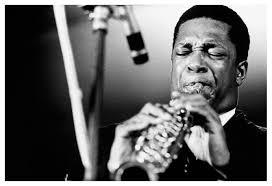
A voracious reader noted for his gentleness, Coltrane had an immense impact on the music world. He revolutionized jazz with his innovative, demanding techniques while showing a deep reverence for sounds from other locales that included Africa, Latin America, the Far East and South Asia. Having received a 1981 Grammy posthumously for the live recording Bye Bye Blackbird, in 1992 Coltrane was given the Grammy Lifetime Achievement Award as well, with an array of unearthed recordings and reissues released in the years since his death. In 2007, the Pulitzer Prize Board also awarded the musician a special posthumous citation. Coltrane's work continues to be an integral part of the sonic landscape and a major inspiration for newer generations of artists.

Clancy's comment: What a shame that so many musicians die so early?
I'm ...


Published on January 15, 2017 12:35
January 14, 2017
15 January 2017 - FIRST, SECOND OR THIRD WORLD COUNTRIES?
FIRST, SECOND OR THIRD WORLD COUNTRIES?
G'day folks,
Ever wondered about this subject?
People often use the term “Third World” as shorthand for poor or developing nations. By contrast, wealthier countries such as the United States and the nations of Western Europe are described as being part of the “First World.” Where did these distinctions come from, and why do we rarely hear about the “Second World?”
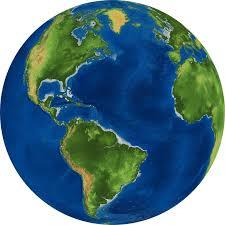
The “three worlds” model of geopolitics first arose in the mid-20th century as a way of mapping the various players in the Cold War. The origins of the concept are complex, but historians usually credit it to the French demographer Alfred Sauvy, who coined the term “Third World” in a 1952 article entitled “Three Worlds, One Planet.” In this original context, the First World included the United States and its capitalist allies in places such as Western Europe, Japan and Australia.
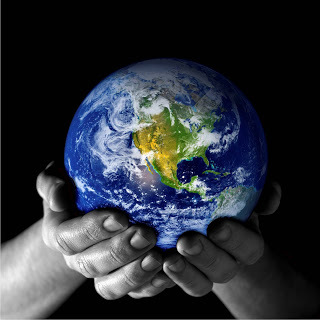
The Second World consisted of the communist Soviet Union and its Eastern European satellites. The Third World, meanwhile, encompassed all the other countries that were not actively aligned with either side in the Cold War. These were often impoverished former European colonies, and included nearly all the nations of Africa, the Middle East, Latin America and Asia.
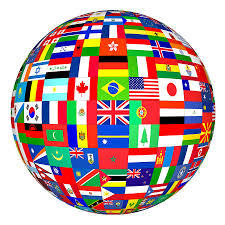
Today, the powerful economies of the West are still sometimes described as “First World,” but the term “Second World” has become largely obsolete following the collapse of the Soviet Union. “Third World” remains the most common of the original designations, but its meaning has changed from “non-aligned” and become more of a blanket term for the developing world.

Since it’s partially a relic of the Cold War, many modern academics consider the “Third World” label to be outdated. Terms such as “developing countries” and “low and lower-middle-income countries” are now often used in its place.

Clancy's comment: Does it really matter?
I'm ...

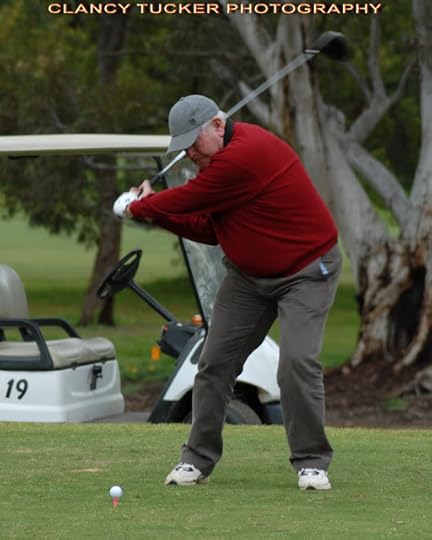
Published on January 14, 2017 12:22
January 12, 2017
13 January 2017 - GALILEO GALILEI
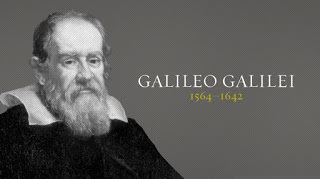
GALILEO GALILEI
G'day folks,
Galileo Galilei was an Italian polymath: astronomer, physicist, engineer, philosopher, and mathematician, he played a major role in the scientific revolution of the seventeenth century.
Galileo Galilei (1564-1642) – Astronomer and Scientist. Galileo developed a superior telescope and made many significant discoveries in astronomy. He was sentenced to life imprisonment by the inquisition for his support for the Copernican theory that the sun was at the centre of the solar system.
Galileo was born in Florence, Italy in 1564 to a poor but noble family.
His parents recognised their child’s innate intelligence and talents and so made sacrifices to have him educated. At his father’s insistence, Galileo studied the profitable career of medicine. But, at the University of Pisa, Galileo became fascinated in a wide range of subjects. He was also critical of many of Aristotle’s teaching which had dominated education for the past 2,000 years.
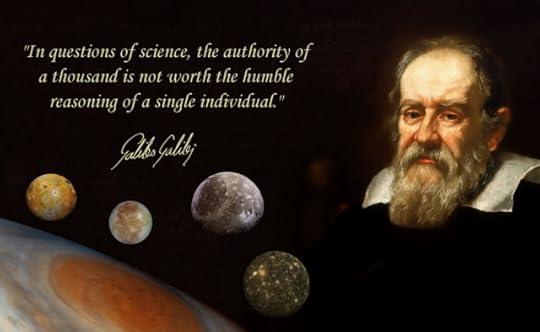
Galileo was appointed to be a mathematics professor at the University of Pisa, but his strident criticisms of Aristotle left him isolated amongst his contemporaries. After three years of persecution, he resigned and went to the Yniversity of Padua, where he taught maths. His entertaining lectures attracted a large following and he was able to spend the next 18 years pursuing his interests in astronomy and mechanics.
During this time, Galileo made important discoveries about gravity, inertia and also developed the forerunner of the thermometer. Galileo also worked tirelessly on the science of gnomonics (telling time by shadows) and the laws of motion.
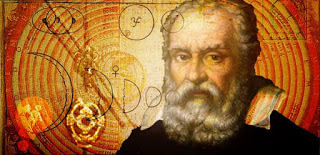
It was in astronomy that Galileo became most famous. In particular his support for heliocentrism, he garnered the opposition of the Holy Roman Catholic Church.
Galileo came to the same conclusions of Copernicus – that the sun was the centre of the universe and not the earth.
Galileo was also a great admirer of Johannes Kepler for his work on planetary motions; Galileo often wrote to Kepler.
By inventing the world’s first telescope, Galileo was able to make many ground-breaking explorations of the universe. He found that:
Saturn had a beautiful ring of clouds.The moon was not flat but had mountains and craters.Jupiter had many moons which revolved around Jupiter rather than directly the sun.Thus, Galileo not only had the mathematical proofs of Copernicus, but, also new proof from the science of astronomy. However, Galileo knew that publishing these studies would bring the disapproval of the church authorities. Yet, he also felt a willingness to risk the church’s displeasure.
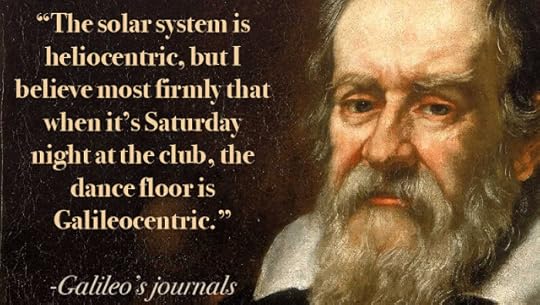
The Church had already started to forbid Galileo’s teachings, especially anything that supported Copernicus. However, in 1623, a new pope, Pope Urban VIII seemed to be more liberally minded and he allowed Galileo to publish his great works on astronomy – supporting the ideas of Copernicus.
However, after publication, conservative elements within the Church sought to attack Galileo’s beliefs and writings. As a consequence, Galileo was arrested and imprisoned for several months. He was convicted of heresy and was forced to recant his beliefs. He spent the remaining years of his life under house arrest at Arceti.
Galileo had three children. He was especially close to one of his daughters, Polissena; she took the name of Sister Maria Celeste and entered a convent near Arceti.
Despite being censured by the church, Galileo continued to make discoveries until death overtook him in 1642. Under house arrest, he was able to write Two New Sciences, this summarised his earlier work on the new sciences now called kinematics and strength of materials. He was blind by the time he passed away.

FACTS:
He was born in Pisa, and studied at the University of Pisa
His book Dialogue Concerning the Two Chief World System, defended the heliocentric view of the universe – with the earth not the sun at the centre.
Using his own telescope, he discovered four moons of Jupiter – Io, Ganymede, Callisto, and Europa.
He also worked on the pendulum clock
Inventions of Galileo included his own models of compass and thermometer. He wasn’t the first person to invent these, but he improved on their models.
Galileo said on the force of nature. ‘ Nature is relentless and unchangeable, and it is indifferent as to whether its hidden reasons and actions are understandable to man or not.’
Galileo was a pious Roman Catholic (he seriously considered priesthood as young man), though in science he didn’t accept the doctrinal view. The Bible shows the way to go to heaven, not the way the heavens go.”
His daughter Maria Celeste was very devoted to Galileo, and she undertook to say his penitent psalms once a week on his behalf.
Galileo’s Principle of Inertia -“A body moving on a level surface will continue in the same direction at constant speed unless disturbed.” was incorporated into Newton’s laws of motion.

Clancy's comment: Another outstanding brain.
I'm ...
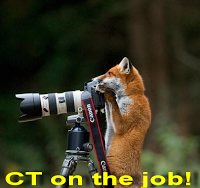
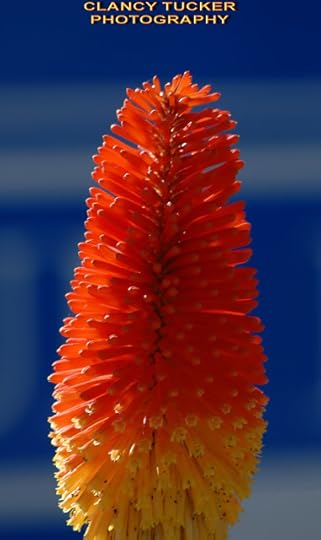
Published on January 12, 2017 11:52
January 11, 2017
12 January 2017 - Dr. JOHN - NEW ORLEANS BLUES
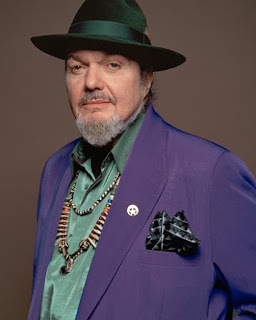
Dr. JOHN- NEW ORLEANS BLUES -
G'day folks,
Malcolm John "Mac" Rebennack, better known by the stage name Dr. John, is an American singer, songwriter, pianist, and guitarist, whose music combines blues, pop, jazz, zydeco, boogie woogie and rock and roll.
Mac Rebennack proved that funk truly is the best medicine. Known better by his medical moniker, Dr. John is the greatest living musical ambassador of the Crescent City. The buoyant, eccentric, oddball singer embodies the boundary-breaking, genre-bending, foot-stomping, voodoo stew that is New Orleans music.
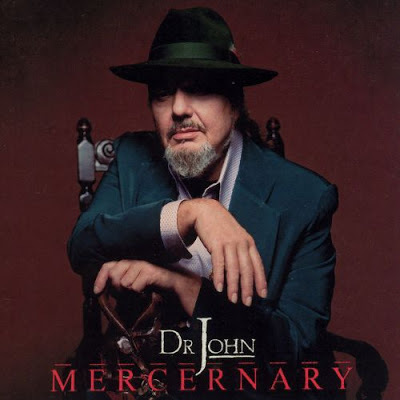
In spite of his self-appointed title, the good Dr. was never much of a student. He attended a Jesuit high school, but fared poorly because he spent his nights playing guitar in the city’s booming after-hours scene. That—and the fact that he was usually stoned out of his gourd—did not help his grades. When the Jesuit fathers offered him a choice between his studies and his music, he ended his formal relationship with school and gleaned much of his education from the pimps, prostitutes, and hustlers that surrounded him.

There was one teacher who had an impact on Mac. New Orleans boogie woogie pianist Professor Longhair attracted the young guitarist’s attention with his joyful bounce and his flashy attire. Like Mac, Professor Longhair did not come by his title through formal schooling, but few in New Orleans would question the man’s authority. Mac cut his teeth backing the Professor and other local legends in his early teens.
Though his career was just getting started, Mac’s guitar-playing days came to an end early. While coming to the defense of a bandmate in a bar brawl during a Jackson, Mississippi, gig, Mac’s finger was blown off by a gunshot. It was then that he adopted the piano. After moving to L.A. and adopting his stage name, Dr. John became a member of the famed Wrecking Crew, a roster of L.A.’s most sought-after studio musicians.
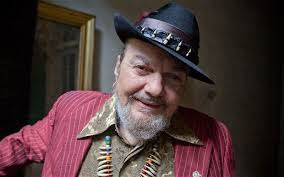
Dr. John backed artists as diverse as Sonny & Cher, Canned Heat, and Frank Zappa, while forging his own identity as “The Night Tripper,” a shamanic, psychedelic, hoodoo man whose live performances drew equally on bayou country medicine shows of the 19th century and the monster-movie performance-art of Screamin’ Jay Hawkins. On his 1968 debut, Gris Gris, Dr. John stirred up a hallucinogenic potion of psychedelic smoke, Santería chanting, and Frenchman’s Street bounce.

In spite of a lifelong struggle with addiction, Dr. John was compulsively prolific, producing a raft of critically embraced and alluringly strange records through the 1970s. With the end the psychedelic era, albums like Dr. John’s Gumbo (1972) and In the Right Place (1973) represented a concerted shift in direction. Both would become Big Easy standards. It was along this path that Dr. John would ultimately stride for much of his career, incorporating the jazz, rock, blues, funk, and zydeco around him and ultimately authoring a style that can only be described as his. Often imitated but never equaled, this Rock and Roll Hall of Fame inductee, winner of six Grammy Awards, and honorary Doctor (finally) of Fine Arts courtesy of Tulane University, isNew Orleans music.

Clancy's comment: I love blues, but sadly have never made it to New Orleans.
I'm ...

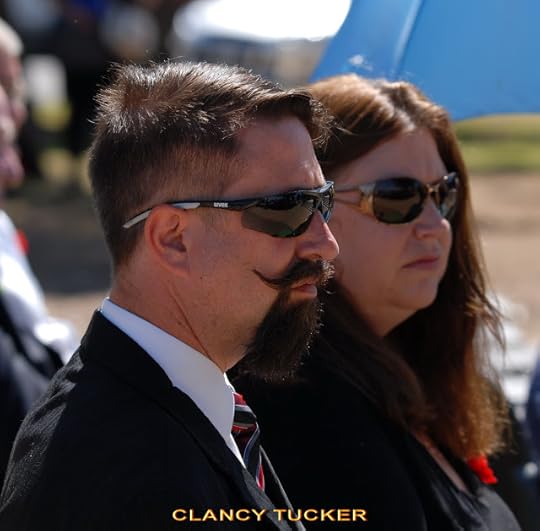
Published on January 11, 2017 12:38



